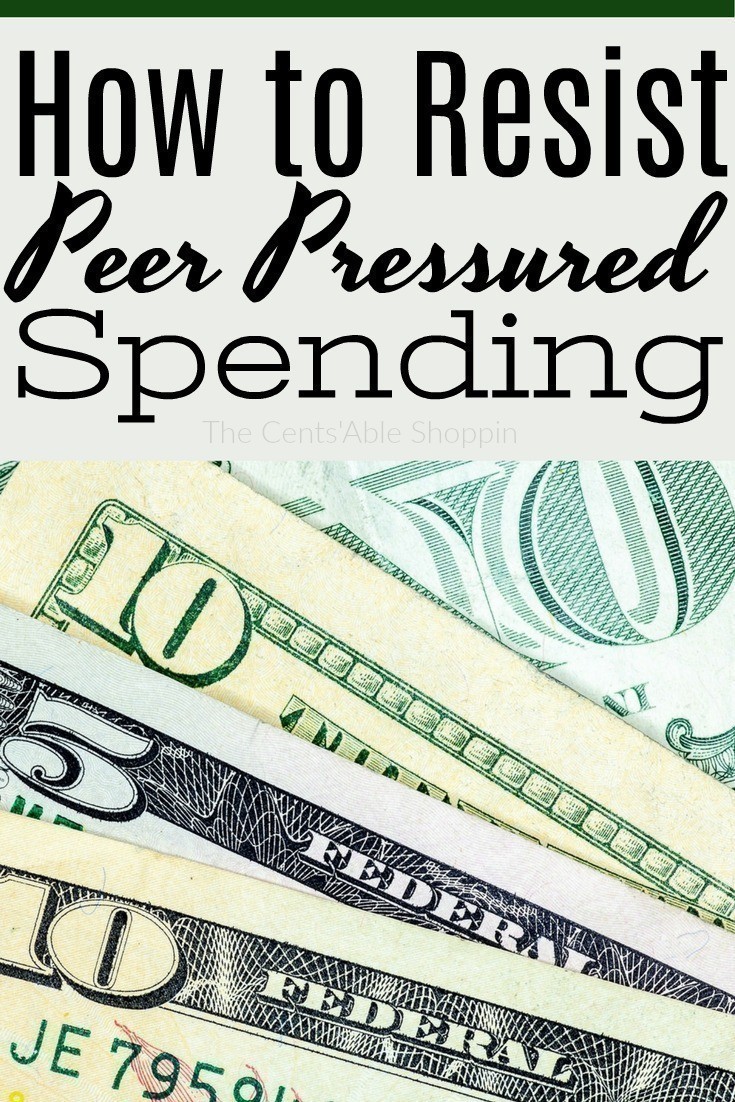
In a society that’s driven towards spending and consumerism, it can be very hard to say no when we really want to make a specific purchase.
It can be even more of a challenge if you have teenagers, or even middle school students who are faced with the peer pressure at school of consumerism. The same also goes for the schools which your kids attend – you may not realize it, but they push the envelope farther and farther each year to urge parents to give more, do more, and contribute more.
For some parents, it might not be so visible – but for others who are watchful of their money and have a designated budget set aside, then it can be an uncomfortable struggle. Sometimes even hard to tell your children, too – because they don’t see the why, just the no in most cases.
Social situations with friends make it incredibly challenging for people to mention that they can’t (or, don’t want to) go out to eat, or go out for something that is truly out of their price range.
Social pressures play a huge part in our spending habits. It’s incredibly hard to say no when we feel pressure from family and even friends.
In order to avoid unnecessary spending, we must be able to identify the social pressures behind our spending habits.
The Urge to Feel Accepted
Almost every day we are faced with the pressure — not just to spend but pressure to fit in. Be accepted. And it’s that pressure that drives us as natural human beings to do what it takes TO fit in – whether it be buying our children toys, food, new clothing, or even larger purchases. That pressure keeps us from being focused on our financial goals, sometimes with unnecessary spending on items that were not truly necessities.
To feel accepted in a group, we want to be like that group – act like that group and even do what it takes to be part of that group.
The only issue is that we don’t always see the financial condition of the group we are trying to be like.. I have told my kids many times in the past… “anyone can have anything they desire”.. but not everyone can truly, really afford all those things they desire.
If everyone in a certain community has a high value {newer} car, it can give a better appearance than those people in a community that may have several older vehicles that are slightly more broken in. But in reality, the newer cars on that street might be leased – or, the families might also be struggling to afford those payments.
Those families might have a nicer, newer vehicle, but their children might also be lacking a college fund, and the parents might not even have a savings set for retirement. The kids, even worse, might be looking to loan their way through college.
The pressure of being like, and fitting in is SO strong that our priorities have oftentimes fallen to the wayside just for the sheer urge to fit in with mainstream America.
Who Does this Affect the Most?
I’d like to think that this type of pressure affects our children the most – perhaps not so much the smaller kids, but our middle or high school students as they often times may not realize that they need not be concerned about outward so much as inward.
The pressure to fit in to these groups at this age is huge – I’m not sure exactly when it officially starts, but when our kids were in public school it seemed to creep up as early as 1st grade. Although it’s much easier to control now that they are not in school, it’s still important that we help them learn that it’s OK to be different. It’s OK not to conform to the expectations of others.
But for other kids, that feeling doesn’t go away as easily – it gets worse as the children grow older.
Pressure Extends to Businesses as Well
This pressure doesn’t just affect people, but it also affects businesses as well.
Businesses with the primary goal of making money also feel a pressure to fit in. These businesses know that the route to the children is through the parents, after all, the parents usually do whatever it takes to make the children happy.
Take for example, the Christmas holiday – when the latest toy is of utmost importance, even if it’s not in the budget. It’s truly hard to say “no, we can’t afford it” to a child who has realistically been great all year. Right?
Saying No with Alternatives
It’s ultimately the responsibility of the parents to help curb these overzealous expectations ~ after all, we all know that outward appearances, material things and fitting in aren’t truly necessities for our children. So instead of giving into the pressure/temptation, teaching them why it’s important to say no to things we sometimes may feel we need is important.
Finding alternative methods to feel comfortable and make your kids happy, perhaps a pot luck, or a picnic dinner at the park. Do a family game night, or find things for your kids in your area that don’t require a huge cost (4H, local groups, etc) – but do provide for social interaction. You won’t be saying no, but you but you are finding alternatives to help everyone save money without disappointing.
Your approach in saying no to pressure may initially not fare well with friends – but over time, if you explain why you are saying no (depending on what you feel comfortable in sharing), you may inspire them to taking the same route to save more too.



